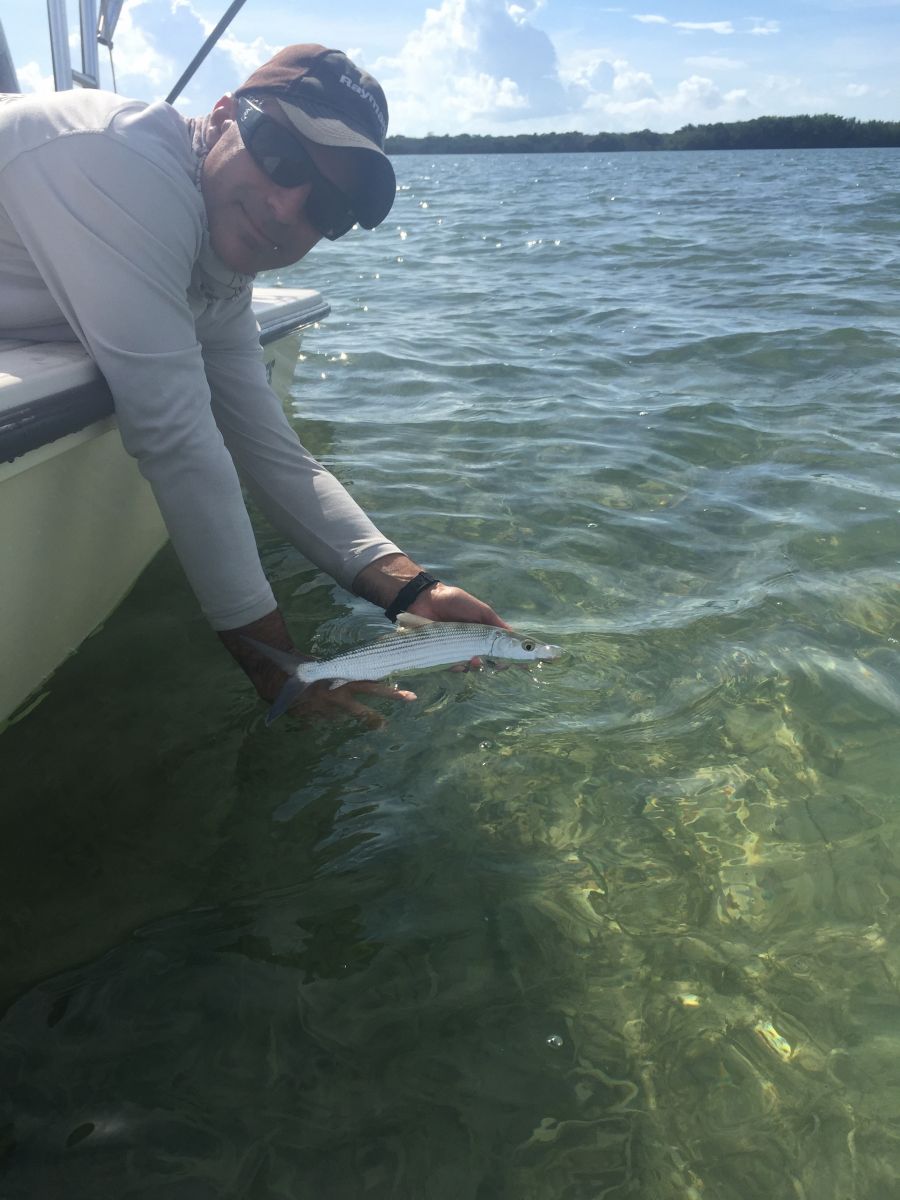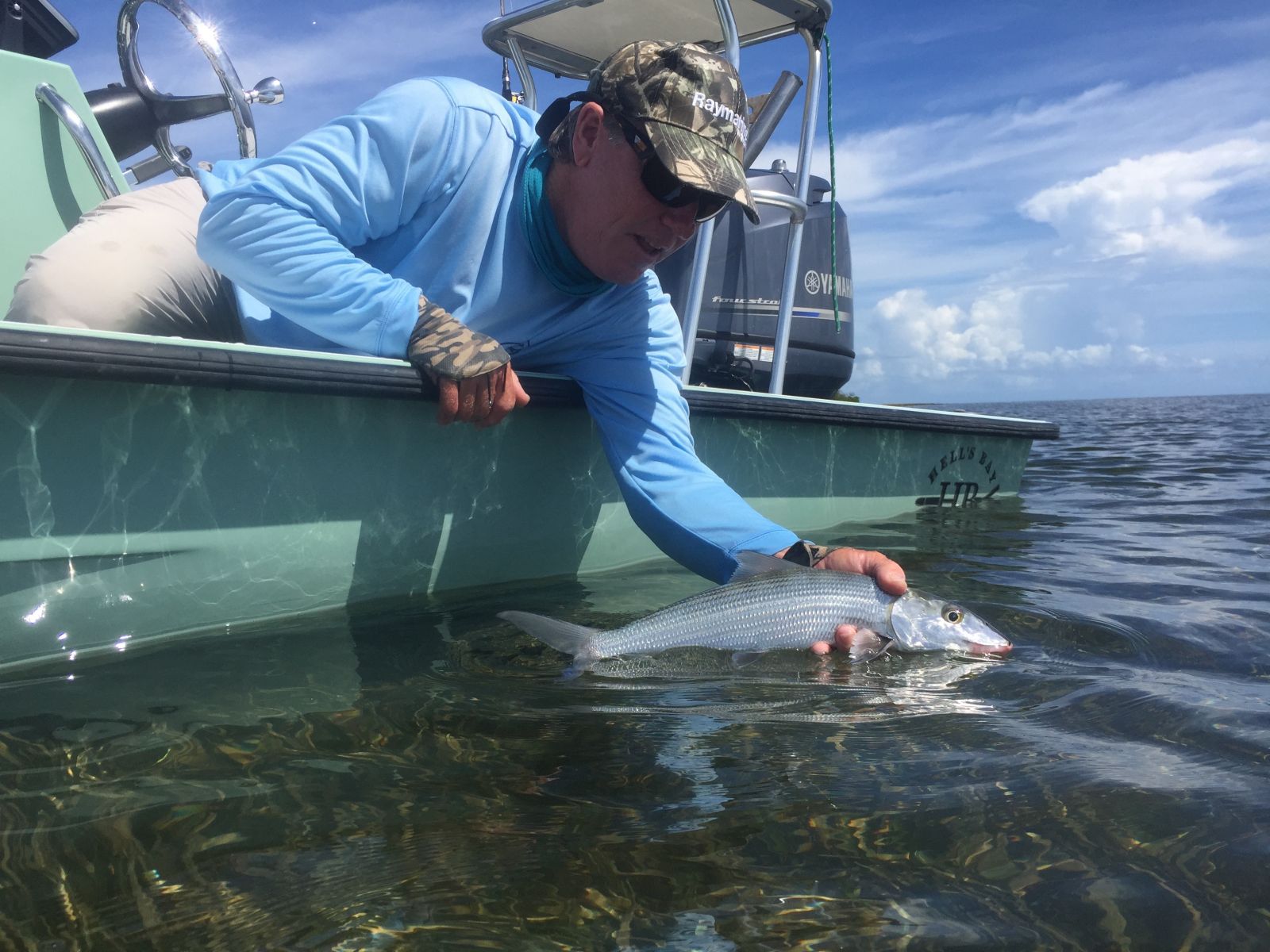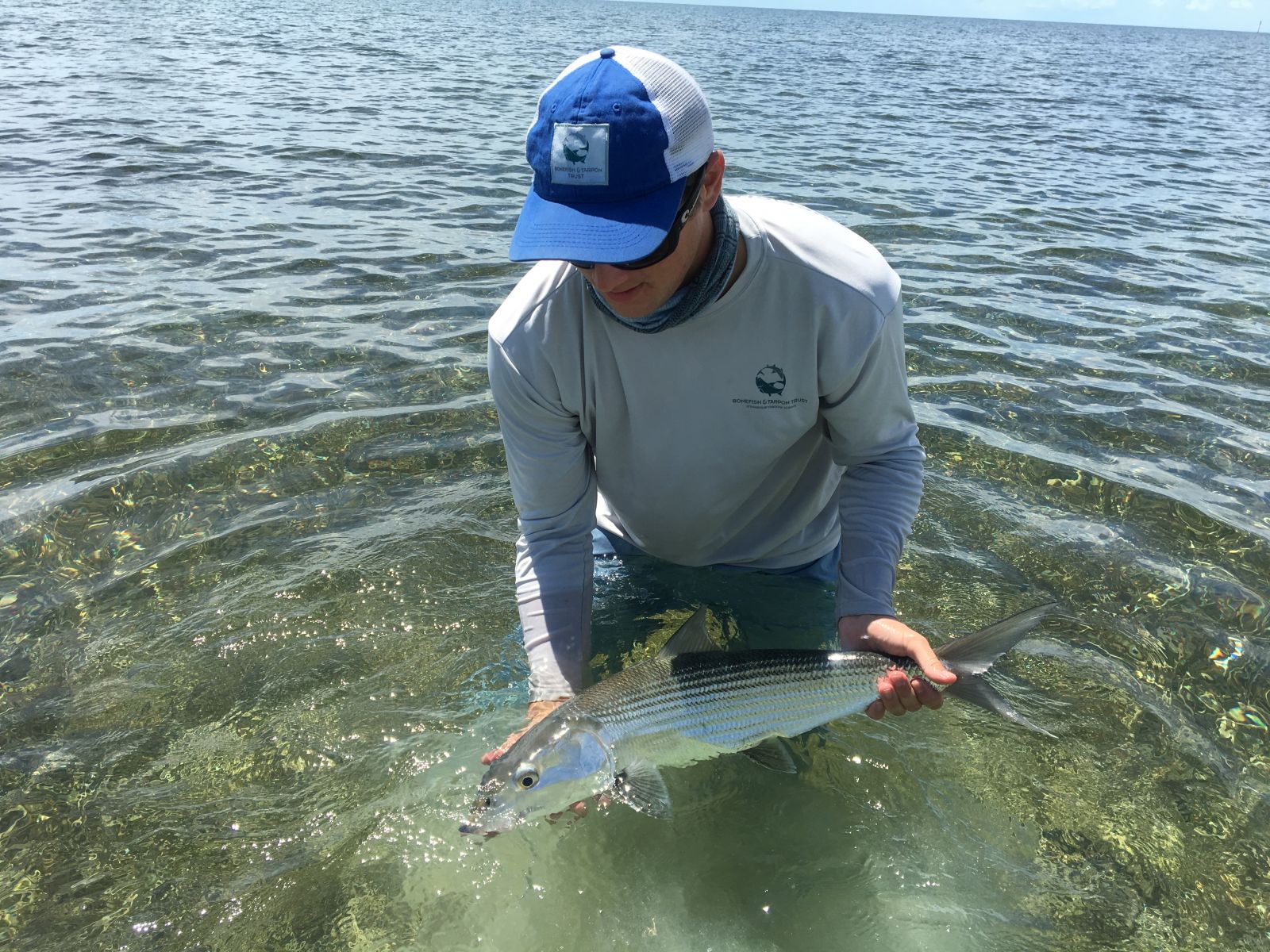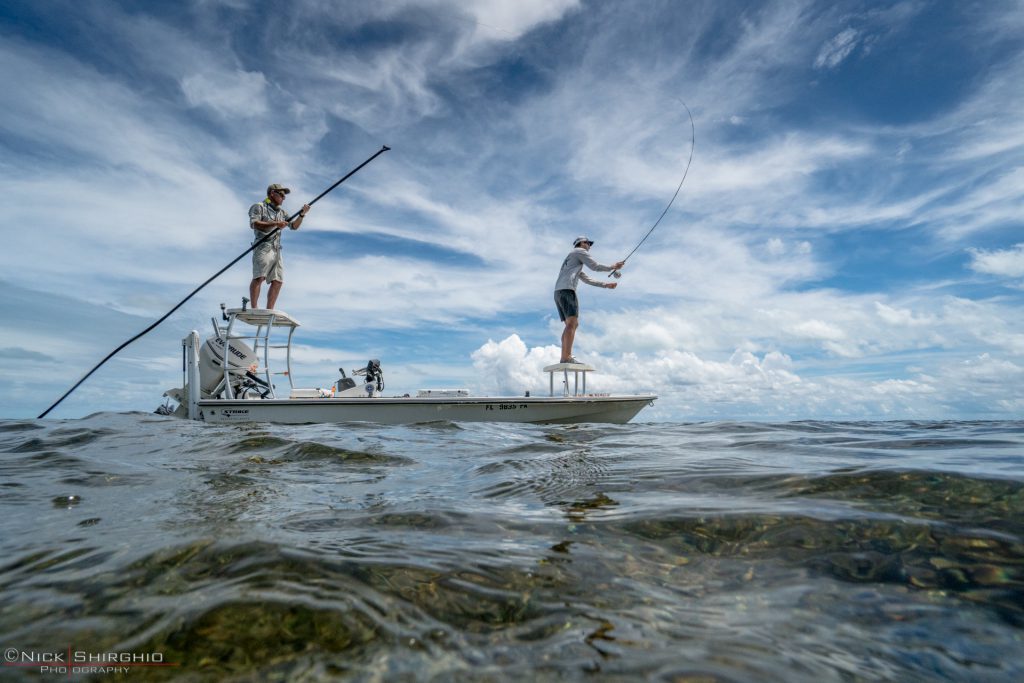 BTT and University of Massachusetts Amherst concluded a successful research trip collecting non-lethal blood samples from bonefish in Miami’s backyard, beautiful Biscayne Bay. A total of 25 blood samples were collected from Miami to North Key Largo in a mere five days thanks to the expertise of Captains Carl Ball, Martin Carranza, and Mo Estevez. We even collected a record 18 bonefish in one day with Captain Carl Ball – talk about a great day of bonefishing!
BTT and University of Massachusetts Amherst concluded a successful research trip collecting non-lethal blood samples from bonefish in Miami’s backyard, beautiful Biscayne Bay. A total of 25 blood samples were collected from Miami to North Key Largo in a mere five days thanks to the expertise of Captains Carl Ball, Martin Carranza, and Mo Estevez. We even collected a record 18 bonefish in one day with Captain Carl Ball – talk about a great day of bonefishing!
 What are the blood samples for? Over the past few decades, many have observed a decline in the number of bonefish across Florida. In response, BTT – in collaboration with multiple universities – is attempting to understand and address the causes of this decline. One potential disturbance that has yet to be studied is the exposure of bonefish to urban development and associated pollutants. Collecting non-lethal blood samples from bonefish allows us to examine the epigenetics of bonefish – essentially, the ‘software’ that turns genes on and off. There may be serious impacts on the life history, including reproduction, of bonefish if pollutants have altered the epigenetics of bonefish, and these impacts could be passed from generation to generation.
What are the blood samples for? Over the past few decades, many have observed a decline in the number of bonefish across Florida. In response, BTT – in collaboration with multiple universities – is attempting to understand and address the causes of this decline. One potential disturbance that has yet to be studied is the exposure of bonefish to urban development and associated pollutants. Collecting non-lethal blood samples from bonefish allows us to examine the epigenetics of bonefish – essentially, the ‘software’ that turns genes on and off. There may be serious impacts on the life history, including reproduction, of bonefish if pollutants have altered the epigenetics of bonefish, and these impacts could be passed from generation to generation.
 Since bonefish in South Florida are exposed to a range of urbanization, we are sampling fish caught from Miami all the way through Key West, as well as from other locations such as remote islands in The Bahamas. Earlier this year we collected samples on South Andros thanks to the help of Bair’s Lodge, from Key West with Captains Brandon Cyr and Jared Cyr, and from Islamorada with BTT Biologist Brooke Black and Captains David Denkert and Richard Black. We still have more sampling to do over the next few months, including other areas in The Bahamas and South Florida. While Florida is still the greatest place to target and land large bonefish, we hope that this study will shed light on what might be resulting in the decline so that we can effectively address it. Stay tuned for more updates on this important project.
Since bonefish in South Florida are exposed to a range of urbanization, we are sampling fish caught from Miami all the way through Key West, as well as from other locations such as remote islands in The Bahamas. Earlier this year we collected samples on South Andros thanks to the help of Bair’s Lodge, from Key West with Captains Brandon Cyr and Jared Cyr, and from Islamorada with BTT Biologist Brooke Black and Captains David Denkert and Richard Black. We still have more sampling to do over the next few months, including other areas in The Bahamas and South Florida. While Florida is still the greatest place to target and land large bonefish, we hope that this study will shed light on what might be resulting in the decline so that we can effectively address it. Stay tuned for more updates on this important project.
Written by contributing scientists Lucas Griffin and Dr. Andy Danylchuk, photos contributed by Nick Shirghio.






